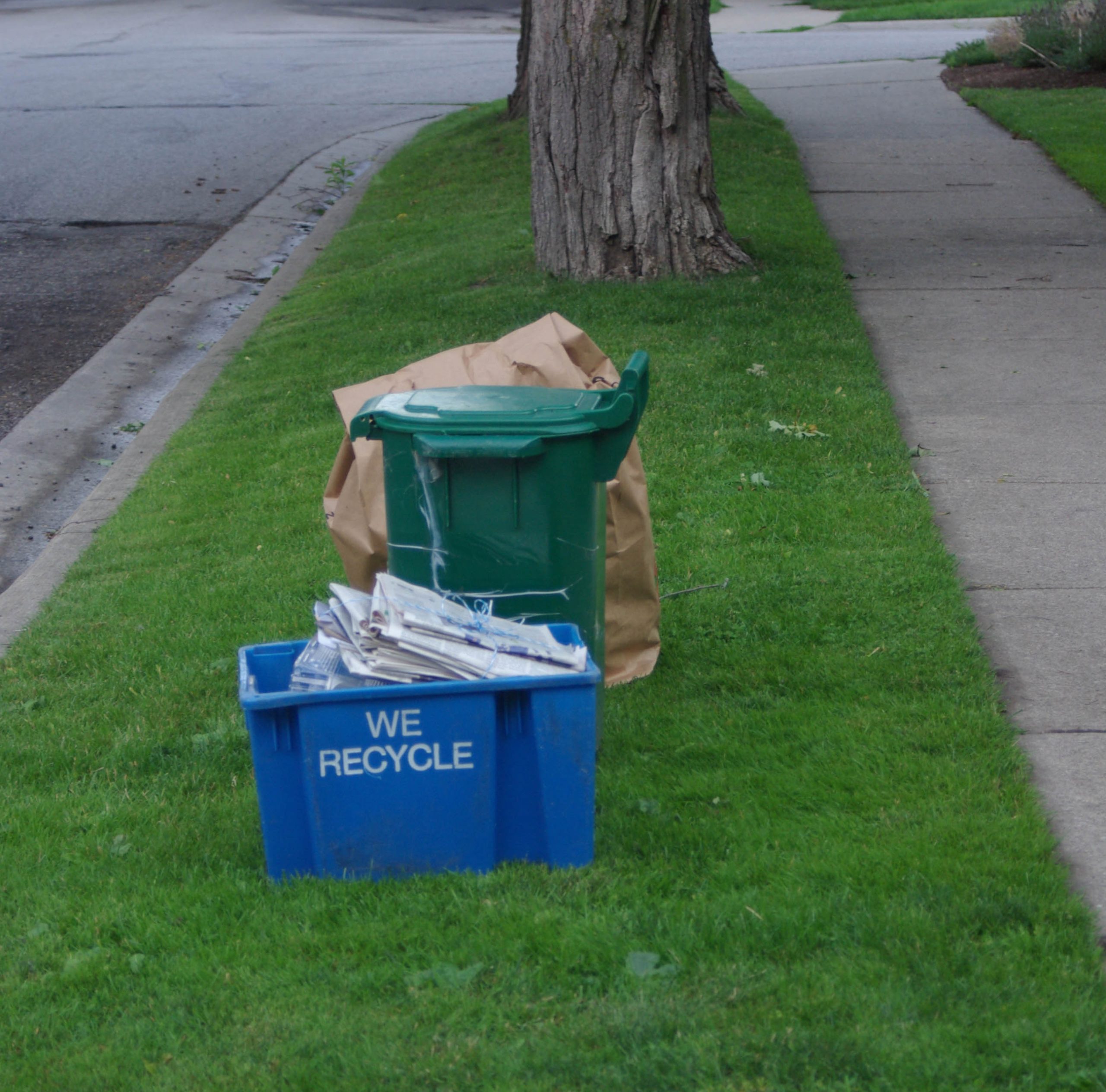Chapter 1
The Blue Box

Warm Up Questions
- Do you recycle? Why or why not?
- Where do you think the blue box originated?
- How do/did you recycle household materials in your home country?
Reading
Listen to the reading shown below.
- In the 1970’s when Nyle Ludolph moved away from the farm he grew up on, he began to work for Laidlaw, but the company had a different name back then. Laidlaw was a company that collected garbage within Waterloo Region and brought it to the landfill site. What Nyle saw everyday in his job had an impact on him. The impact was significant.
- Nyle’s family lived a simple life on the farm where they produced their own food. When they killed an animal to eat, all the parts of the animal were used; nothing was wasted. When clothing became worn, it was fixed so that it could continue to be used. If furniture or appliances broke, repairs were made. Similarly, the farm machinery was cared for and maintained. When containers were emptied, they were reused; food waste was composted. Nyle grew up with a clear vision of careful living.
- Nyle was attracted to the steady job and good income available as a garbage man. When he worked for Laidlaw, his job was to collect garbage from households in Waterloo Region. He was shocked to see how much waste was collected. From Nyle’s point of view, there were many things that did not need to be taken to the landfill. He thought people could repair more items, but he also thought the cans, plastic and newspaper didn’t belong in the landfill site. He was thinking of the environment; he looked for a different way to dispose of these items. Before he took his idea to the Laidlaw company, he wanted an approximate idea of what difference recycling would make. He and his wife and children started to separate the waste that they put out each week. They kept back the items that could be recycled, and they found that there was a reduction in the amount of trash they put out weekly. He could clearly see how his idea would create change.
- After approaching his company with his ideas about alternative ways to dispose of the recyclable items, they sent him to a conference in Toronto. At the meeting in Toronto, Nyle made contact with others who were thinking about recycling. Some of the people he connected with had initiated a system in Toronto where they drove around and picked up materials left out for them. That Toronto neighbourhood was old and crowded and a number of people resided there. This connection with others who were thinking about recycling got Nyle thinking about the potential for his company back home in Waterloo Region.
- When Nyle got back to work at Laidlaw, he was excited. His goal was to exclude recyclable materials from the landfill. He had thought of a plan for a complete recycling process to present to his company. The process that he planned started with residents manually separating these materials before pick up on garbage day. He had created a way to collect the cans, newspaper, and plastic. He thought the best way to collect these items would be to equip each household with a box where the recyclable goods could accumulate each week. This box could be put out at the same time as the garbage cans. He thought the residents of Waterloo would cooperate because reducing waste in the landfill would make them feel good. He saw the recycling boxes having a big impact in eliminating the amount of garbage dumped into the landfill.
- Nyle’s company cooperated to make the idea reality. They thought they could integrate the recycling pickup into the garbage pick up by collecting everything at the same time. Research was completed into what a box would look like. They decided to utilize a blue plastic box for the recycling materials because the colour would be easy to see in snow, or on grass as well as on a driveway. “We recycle” was printed on the side of the box to reinforce Nyle’s idea that people would cooperate because it would feel good. Blue boxes were given to residents across Waterloo Region in 1986.
- Nyle saw many things once he left the farm he grew up on. Could he see the impact of his idea today? In 2019 in Waterloo Region, 65% of household waste was redirected to recycling through the blue box and the sister program, the green bin. Blue boxes are used in communities across Canada.
Comprehension Questions
Answer the following questions in complete sentences.
- Describe three details about Nyle Ludolph’s background.
- Nyle did two different jobs at Laidlaw. What were they?
- What did Nyle find shocking about garbage pickup?
- What did Nyle learn at the conterence in Toronto?
- Why is the blue box blue?
- In your opinion, how did Nyle’s upbringing on the farm connect to the way he changed the garbage pickup?
- How do you think recycling can be improved now?
Vocabulary Words
Listen to the pronunciation of the words listed below.
alternative
approaching
approximate
conference
connect
cooperate
create
equip
exclude
impact
items
initiated
integrate
maintained
manually
potential
process
significant
similarly
vision

